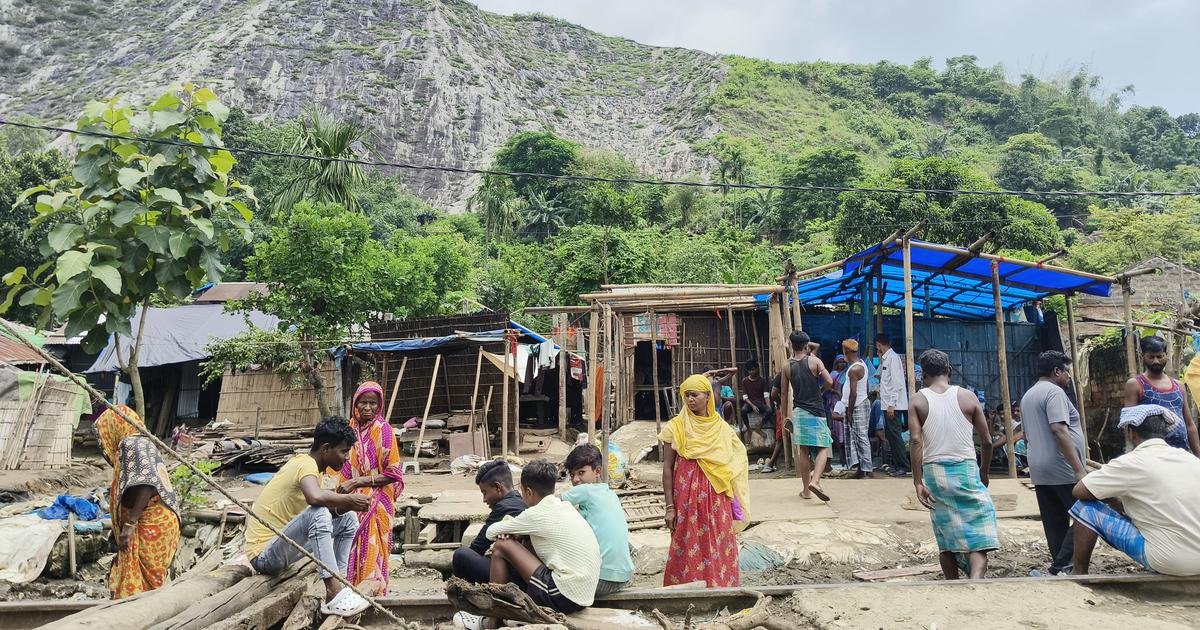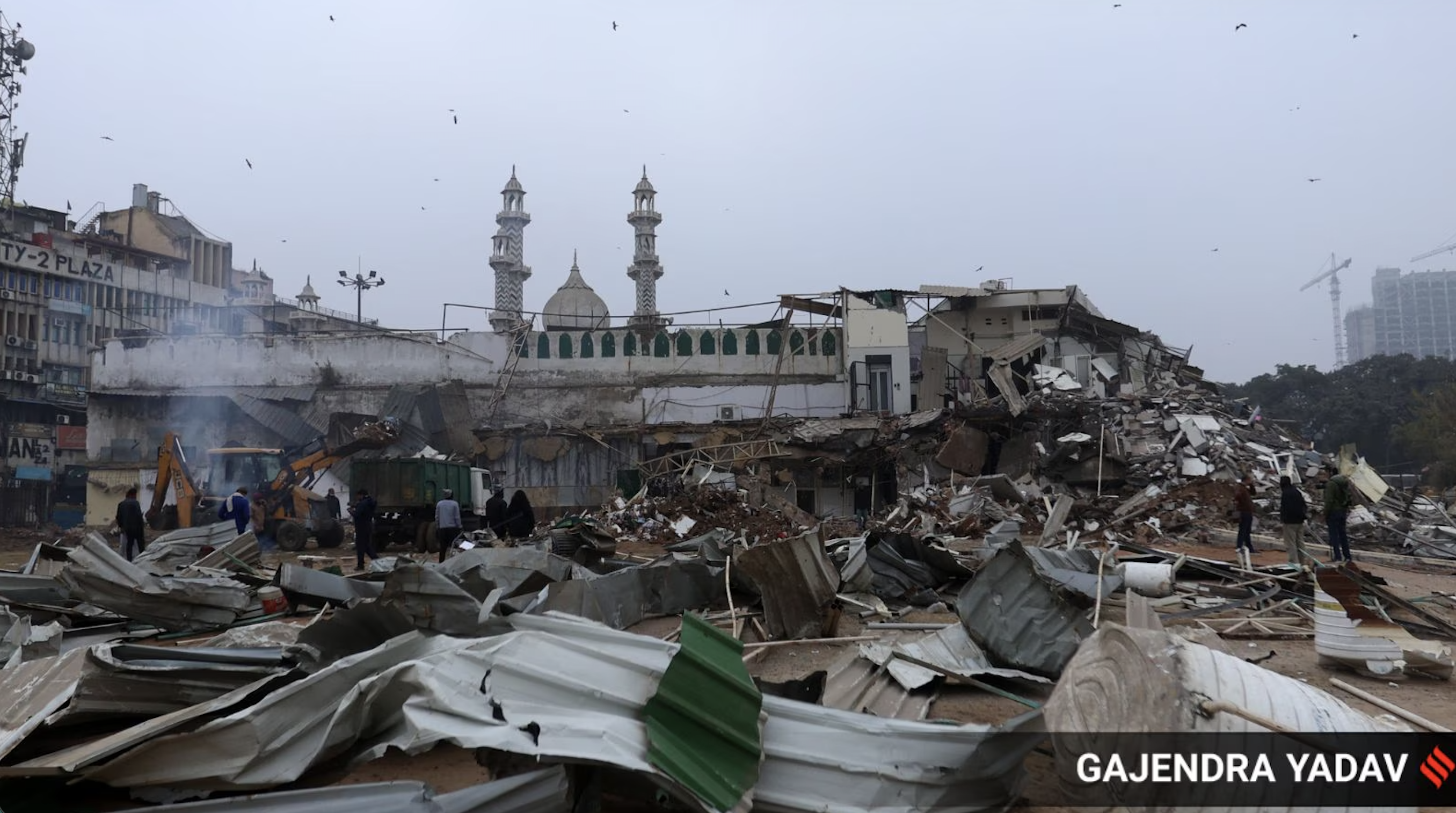
As the sun came out on the morning of July 6, Mamoni Begum laid out her sodden school textbooks to dry on railway tracks in Assam’s Jagiroad.
For close to two weeks now, the Class 10 student and her family members have been living under a tarpaulin sheet, watching helplessly as books and clothes are soaked by the heavy rain.
Surrounding them is the rubble of their former home, which had stood for 40 years on the foothills of the Silbhanga hill near the defunct railway line.
On June 24, the tin-roofed house was among hundreds of other residential buildings demolished by the Morigaon district administration. Around 8,000 people have been turned homeless by the eviction, residents and district administration officials said.
According to the residents, 1,500-odd families had been living in this settlement in Silbhanga village for four decades. District officials said they were evicted as they were “unauthorised encroachers” on railway land.
“We have been living here for three generations,” Mamoni said. “My maternal grandfather lived here. My mother was born in this house. My brothers and I were living here. But now we don’t have any land or place to go.”
A few hundred metres from Mamoni’s house, a cluster of houses, a school, a temple and an ashram stand amid the debris of other buildings.
“Those are the residences of Hindu families. But they are still standing,” said the Class 10 student, pointing to the structures. “The temple and the ashram are also on railway land. Why were they not pulled down?”
This story was originally published in scroll.in. Read the full story here.






